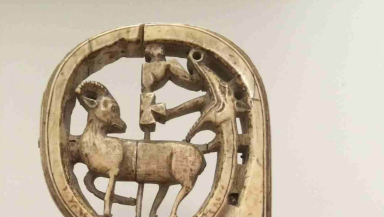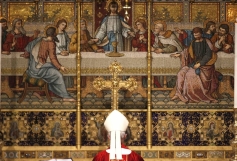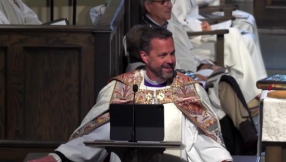The ancient relics of murdered archbishop Thomas Becket are to go on display in Canterbury this year, on loan from the Vatican.
The relics, including Becket's bloodied vestments, are usually kept at Hungary's Esztergom Basilica, but are venerated at the Vatican on December 29 each year to mark the anniversary of his death.
They will be put on display at Canterbury Cathedral in May.
Becket was murdered at Canterbury Cathedral in 1170 by followers of King Henry II, with whom Becket had clashed over the privileges of the Church. The vestments in which he was killed, stained by the archbishop's blood, were once believed to cause miracles.
Another ancient Christian object will go on display at the cathedral in Canterbury this week – the ivory head of the crozier, or pastoral staff, that is traditionally associated with sixth century Pope, St Gregory I.
St Gregory famously sent St Augustine to England in 597 AD to convert the Anglo-Saxons to Christianity, and was known as the 'Father of Christian Worship' throughout the Middle Ages.
The crozier will go on display this weekend and the following weekend (9-10 and 16-17 January) to mark the beginning and end of the historical meeting of Anglican Primates at Canterbury.

Very Rev Dr Robert Willis, Dean of Canterbury Cathedral, said: "We are very pleased to receive the crozier as a symbol of ecumenical encouragement at this time of the meeting of Anglican Primates and as a link with St Gregory whose vision of the conversion of England caused Augustine to found the community at Canterbury."
Cardinal Gianfranco Ravasi, president of the Pontifical Council for Culture, said the staff symbolises the strong bond between Catholics and Anglicans.
He said: "Allow me at this point to congratulate you on the highly symbolic value of the loan of this relic, dear to the Church of England, which venerates Pope St Gregory the Great, the promoter of the evangelizing mission to the Anglo-Saxon people and is therefore a mark of the bond that spiritually unites the Catholic and Anglican Churches."














